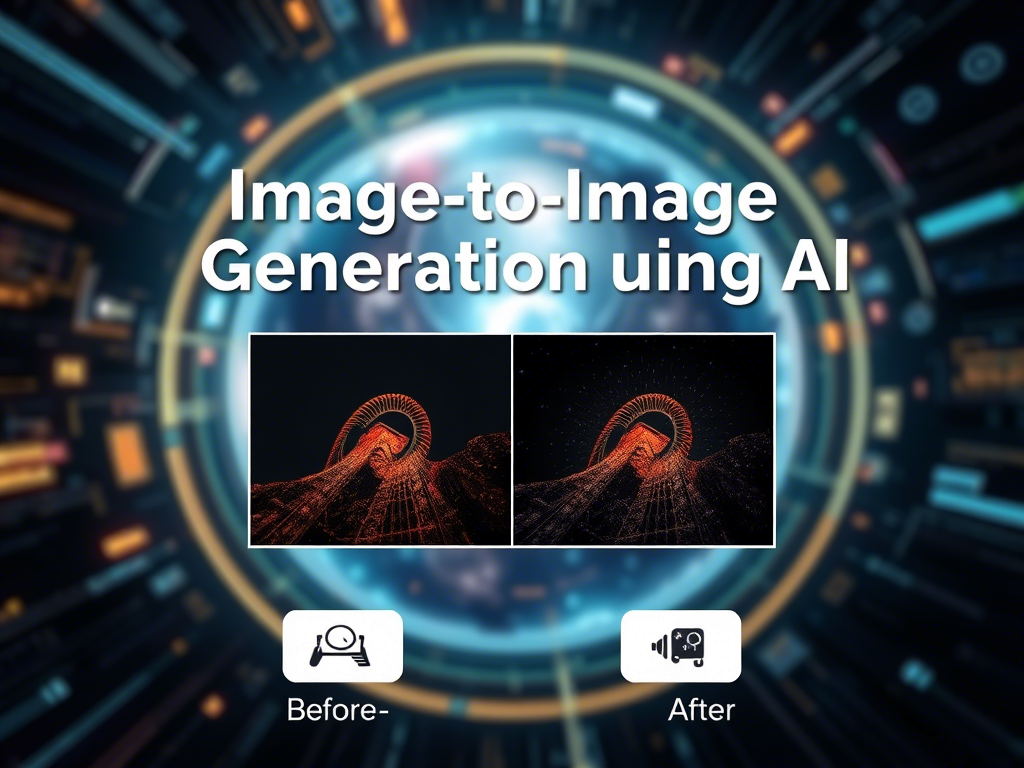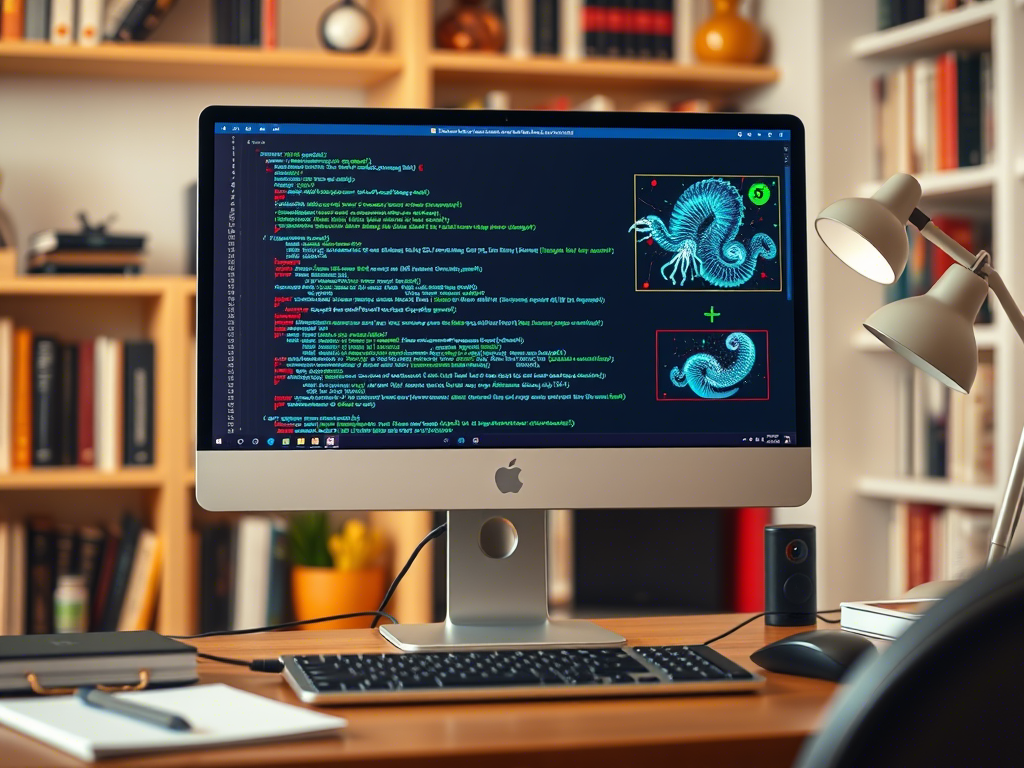Note: This guide provides a step-by-step tutorial for building an image-to-image generator using the Pix2Pix model in Google Colab.
Introduction
Image-to-image generation is a fascinating application of artificial intelligence where a model takes an input image and transforms it into an output image based on a specific task. This can include tasks like style transfer, image colorization, super-resolution, or even converting sketches to realistic images. One of the most popular models for this task is the Pix2Pix model, which is based on Generative Adversarial Networks (GANs).
In this guide, we will walk you through the process of setting up an image-to-image generator using the Pix2Pix model in Google Colab. We will cover the prerequisites, step-by-step implementation, and how to run the code.
Prerequisites
Before we begin, ensure you have the following:
- Google Account: You need a Google account to access Google Colab.
- Basic Python Knowledge: Familiarity with Python programming will help you understand the code.
- Understanding of Neural Networks: Basic knowledge of neural networks and GANs will be beneficial.
- Google Colab: We will use Google Colab for this tutorial, which provides free GPU resources.
Step-by-Step Guide
Step 1: Open Google Colab
1. Go to Google Colab.
2. Click on File > New Notebook to create a new Colab notebook.
Step 2: Enable GPU
1. In your Colab notebook, click on Runtime > Change runtime type.
2. Select GPU as the hardware accelerator and click Save.
Step 3: Install Required Libraries
We will use TensorFlow and Keras for this implementation. Run the following code in a Colab cell:
!pip install tensorflow tensorflow_datasets
Step 4: Import Libraries
Import the necessary libraries for the project:
import tensorflow as tf
from tensorflow.keras import layers
import tensorflow_datasets as tfds
import matplotlib.pyplot as plt
import numpy as np
Step 5: Load and Preprocess the Dataset
We will use the tfds library to load a dataset. For this example, we will use the CMP Facade Dataset, which is commonly used for image-to-image tasks.
dataset, metadata = tfds.load('cycle_gan/facades', with_info=True, as_supervised=True)
train_images = dataset['train']
test_images = dataset['test']
# Normalize images to the range [-1, 1]
def normalize(image):
image = tf.cast(image, tf.float32)
image = (image / 127.5) - 1
return image
def preprocess_image(image, label):
image = normalize(image)
return image
train_images = train_images.map(preprocess_image)
test_images = test_images.map(preprocess_image)
Step 6: Build the Pix2Pix Model
The Pix2Pix model consists of a generator and a discriminator. Here’s how to define them:
# Generator
def build_generator():
inputs = tf.keras.layers.Input(shape=[256, 256, 3])
# Downsample
down_stack = [
layers.Conv2D(64, 4, strides=2, padding='same', use_bias=False),
layers.LeakyReLU(),
layers.Conv2D(128, 4, strides=2, padding='same', use_bias=False),
layers.BatchNormalization(),
layers.LeakyReLU(),
layers.Conv2D(256, 4, strides=2, padding='same', use_bias=False),
layers.BatchNormalization(),
layers.LeakyReLU(),
layers.Conv2D(512, 4, strides=2, padding='same', use_bias=False),
layers.BatchNormalization(),
layers.LeakyReLU(),
]
# Upsample
up_stack = [
layers.Conv2DTranspose(256, 4, strides=2, padding='same', use_bias=False),
layers.BatchNormalization(),
layers.ReLU(),
layers.Conv2DTranspose(128, 4, strides=2, padding='same', use_bias=False),
layers.BatchNormalization(),
layers.ReLU(),
layers.Conv2DTranspose(64, 4, strides=2, padding='same', use_bias=False),
layers.BatchNormalization(),
layers.ReLU(),
]
# Final layer
initializer = tf.random_normal_initializer(0., 0.02)
last = layers.Conv2DTranspose(3, 4, strides=2, padding='same', kernel_initializer=initializer, activation='tanh')
x = inputs
skips = []
for down in down_stack:
x = down(x)
skips.append(x)
skips = reversed(skips[:-1])
for up, skip in zip(up_stack, skips):
x = up(x)
x = layers.Concatenate()([x, skip])
x = last(x)
return tf.keras.Model(inputs=inputs, outputs=x)
# Discriminator
def build_discriminator():
initializer = tf.random_normal_initializer(0., 0.02)
inp = layers.Input(shape=[256, 256, 3], name='input_image')
tar = layers.Input(shape=[256, 256, 3], name='target_image')
x = layers.concatenate([inp, tar])
x = layers.Conv2D(64, 4, strides=2, padding='same', kernel_initializer=initializer)(x)
x = layers.LeakyReLU()(x)
x = layers.Conv2D(128, 4, strides=2, padding='same', kernel_initializer=initializer)(x)
x = layers.BatchNormalization()(x)
x = layers.LeakyReLU()(x)
x = layers.Conv2D(256, 4, strides=2, padding='same', kernel_initializer=initializer)(x)
x = layers.BatchNormalization()(x)
x = layers.LeakyReLU()(x)
x = layers.Conv2D(1, 4, strides=1, padding='same', kernel_initializer=initializer)(x)
return tf.keras.Model(inputs=[inp, tar], outputs=x)
generator = build_generator()
discriminator = build_discriminator()
Step 7: Define Loss Functions and Optimizers
Define the loss functions for the generator and discriminator:
loss_object = tf.keras.losses.BinaryCrossentropy(from_logits=True)
def generator_loss(disc_generated_output, gen_output, target):
gan_loss = loss_object(tf.ones_like(disc_generated_output), disc_generated_output)
l1_loss = tf.reduce_mean(tf.abs(target - gen_output))
return gan_loss + (100 * l1_loss)
def discriminator_loss(disc_real_output, disc_generated_output):
real_loss = loss_object(tf.ones_like(disc_real_output), disc_real_output)
generated_loss = loss_object(tf.zeros_like(disc_generated_output), disc_generated_output)
return real_loss + generated_loss
generator_optimizer = tf.keras.optimizers.Adam(2e-4, beta_1=0.5)
discriminator_optimizer = tf.keras.optimizers.Adam(2e-4, beta_1=0.5)
Step 8: Train the Model
Train the model using the defined loss functions and optimizers:
@tf.function
def train_step(input_image, target):
with tf.GradientTape() as gen_tape, tf.GradientTape() as disc_tape:
gen_output = generator(input_image, training=True)
disc_real_output = discriminator([input_image, target], training=True)
disc_generated_output = discriminator([input_image, gen_output], training=True)
gen_loss = generator_loss(disc_generated_output, gen_output, target)
disc_loss = discriminator_loss(disc_real_output, disc_generated_output)
generator_gradients = gen_tape.gradient(gen_loss, generator.trainable_variables)
discriminator_gradients = disc_tape.gradient(disc_loss, discriminator.trainable_variables)
generator_optimizer.apply_gradients(zip(generator_gradients, generator.trainable_variables))
discriminator_optimizer.apply_gradients(zip(discriminator_gradients, discriminator.trainable_variables))
def train(dataset, epochs):
for epoch in range(epochs):
for input_image, target in dataset:
train_step(input_image, target)
print(f"Epoch {epoch + 1} completed")
# Train the model
EPOCHS = 50
train(train_images.batch(1), EPOCHS)
Step 9: Generate Images
After training, you can use the generator to produce images:
def generate_images(model, test_input, target):
prediction = model(test_input, training=True)
plt.figure(figsize=(10, 10))
display_list = [test_input[0], target[0], prediction[0]]
title = ['Input Image', 'Ground Truth', 'Predicted Image']
for i in range(3):
plt.subplot(1, 3, i+1)
plt.title(title[i])
plt.imshow(display_list[i] * 0.5 + 0.5)
plt.axis('off')
plt.show()
# Test the generator
for example_input, example_target in test_images.take(1):
generate_images(generator, example_input[np.newaxis, ...], example_target[np.newaxis, ...])
Conclusion
You have successfully built and trained an image-to-image generator using the Pix2Pix model in Google Colab. This model can be extended to other tasks like style transfer, photo enhancement, or even medical image analysis. Experiment with different datasets and hyperparameters to improve the results!
Let me know if you need further assistance! 🚀



